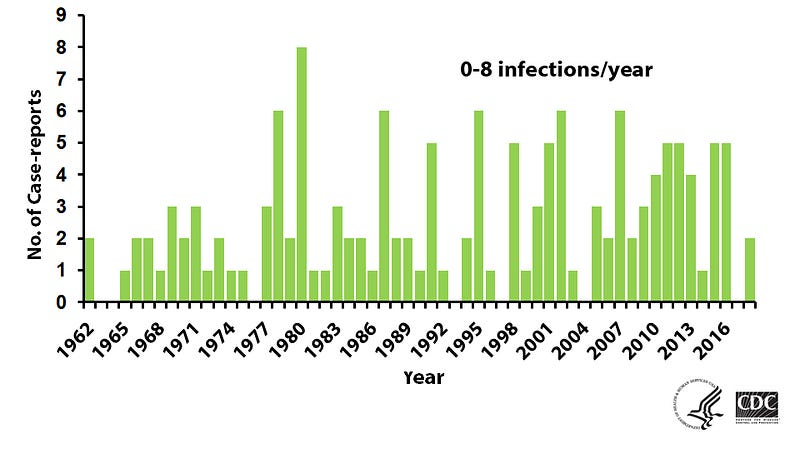Understanding the Brain-Eating Amoeba and Its Risks
Written on
Chapter 1: The Threat of Naegleria Fowleri
Recently, a concerning discovery was made in Texas: several towns were alerted that their tap water contained a rare and lethal microbe known as Naegleria fowleri, commonly referred to as the brain-eating amoeba. This alarming news came amid an already challenging year, leading residents to be cautious about using tap water for anything other than toilet flushing.
A tragic case in Lake Jackson, Texas, involved a six-year-old who lost his life after coming into contact with this organism at a water fountain. Although Naegleria fowleri is usually eliminated during water treatment processes, tests detected its presence, prompting officials to advise residents to boil the water before use. The amoeba can be introduced into the body through the nasal passages, particularly when showering or swimming in contaminated water.
This organism thrives in warm freshwater environments and is often found in soil. Due to its preference for higher temperatures, infections are more frequently reported in Southern states like Florida and Texas. While ingesting water that contains Naegleria fowleri does not typically lead to infection, exposure occurs when contaminated water enters the nose. This can happen during activities like swimming in lakes or even using a Neti Pot, which has resulted in fatalities.
The infections caused by this nearly invisible amoeba are almost always deadly, as it attacks and destroys brain tissue. Once diagnosed, treatment is exceedingly difficult, with only four recorded survivors out of 145 cases between 1962 and 2018. This results in a staggering 97% fatality rate for documented cases.

Chapter 2: Understanding the Symptoms
Naegleria fowleri causes an illness known as Primary Amoebic Meningoencephalitis (PAM). Symptoms can resemble those of viral meningitis, including fever, chills, body aches, seizures, and a loss of taste and smell. Unfortunately, once symptoms appear, the prognosis is grim, with death often occurring within three to five days.
Despite the terrifying nature of this infection, the probability of contracting it remains extremely low. The CDC estimates that there are only about eight cases reported annually in the United States. Even accounting for possible undiagnosed infections, the likelihood of encountering this pathogen is minimal.
Brain-Eating Amoeba | Check This Out! - YouTube This video provides an in-depth look at the brain-eating amoeba, its habitats, and the risks associated with it.
Chapter 3: Precautions and Common Sense
If you are concerned about encountering this amoeba, there are steps you can take to reduce your risk. First and foremost, avoid swimming in lakes or rivers, and if you must, try to prevent water from entering your nose. When using a Neti Pot, opt for distilled water, and if tap water is necessary, boil it for at least three minutes beforehand.
However, it's important to remember that being overly fearful of such a rare threat can inhibit your enjoyment of life. It’s not worth living in constant worry about every possible danger. Embrace common sense, enjoy your life, and partake in activities that bring you joy. After all, the memories of fun-filled days on a lake with loved ones far outweigh the fear of an unlikely tragedy.
This Amoeba Can Eat Your Brain... - YouTube This video explains the biology of Naegleria fowleri and offers insights into how to stay safe from this rare amoeba.